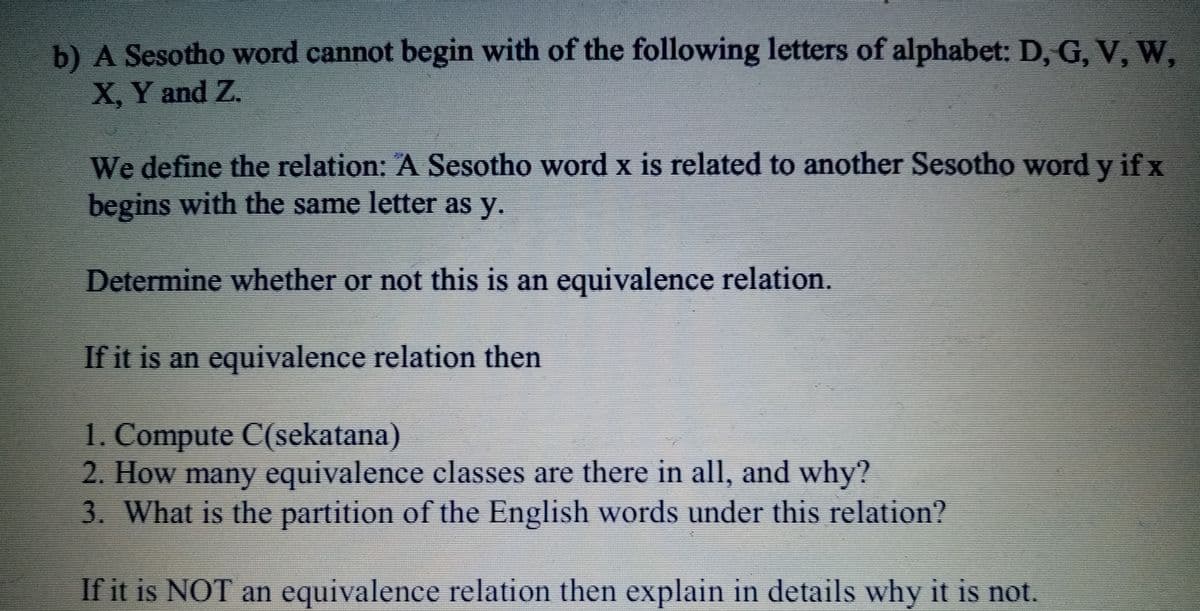b) A Sesotho word cannot begin with of the following letters of alphabet: D, G, V, W, X, Y and Z. We define the relation: A Sesotho word x is related to another Sesotho word y if x begins with the same letter as y. Determine whether or not this is an equivalence relation. If it is an equivalence relation then 1. Compute C(sekatana) 2. How many equivalence classes are there in all, and why? 3. What is the partition of the English words under this relation?
b) A Sesotho word cannot begin with of the following letters of alphabet: D, G, V, W, X, Y and Z. We define the relation: A Sesotho word x is related to another Sesotho word y if x begins with the same letter as y. Determine whether or not this is an equivalence relation. If it is an equivalence relation then 1. Compute C(sekatana) 2. How many equivalence classes are there in all, and why? 3. What is the partition of the English words under this relation?
Elements Of Modern Algebra
8th Edition
ISBN:9781285463230
Author:Gilbert, Linda, Jimmie
Publisher:Gilbert, Linda, Jimmie
Chapter1: Fundamentals
Section1.7: Relations
Problem 3E: a. Let R be the equivalence relation defined on Z in Example 2, and write out the elements of the...
Related questions
Question

Transcribed Image Text:b) A Sesotho word cannot begin with of the following letters of alphabet: D, G, V, W,
X, Y and Z.
We define the relation: A Sesotho word x is related to another Sesotho word y if x
begins with the same letter as y.
Determine whether or not this is an equivalence relation.
If it is an equivalence relation then
1. Compute C(sekatana)
2. How many equivalence classes are there in all, and why?
3. What is the partition of the English words under this relation?
If it is NOT an equivalence relation then explain in details why it is not.
Expert Solution
This question has been solved!
Explore an expertly crafted, step-by-step solution for a thorough understanding of key concepts.
Step by step
Solved in 2 steps with 2 images

Recommended textbooks for you

Elements Of Modern Algebra
Algebra
ISBN:
9781285463230
Author:
Gilbert, Linda, Jimmie
Publisher:
Cengage Learning,

Elements Of Modern Algebra
Algebra
ISBN:
9781285463230
Author:
Gilbert, Linda, Jimmie
Publisher:
Cengage Learning,